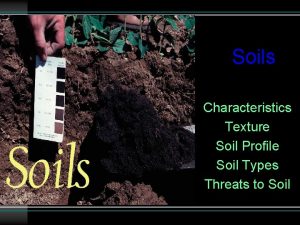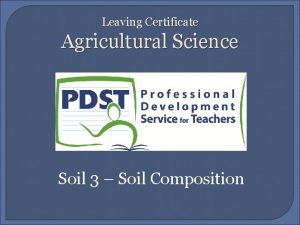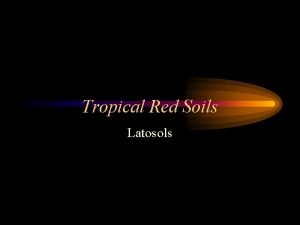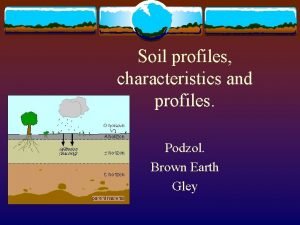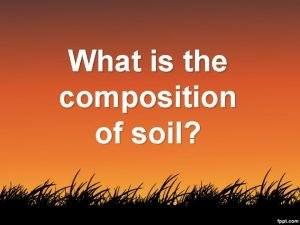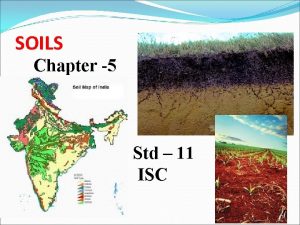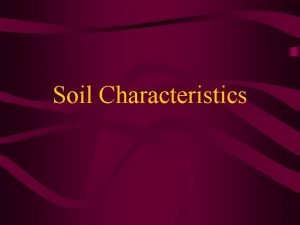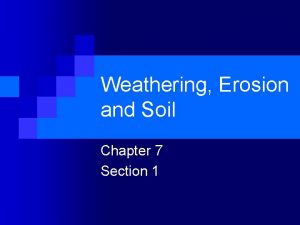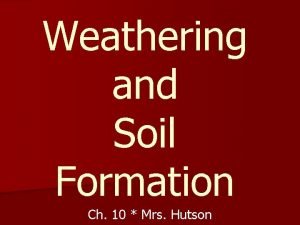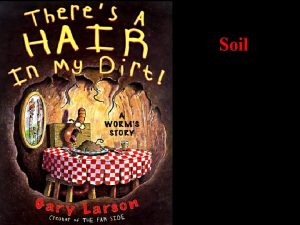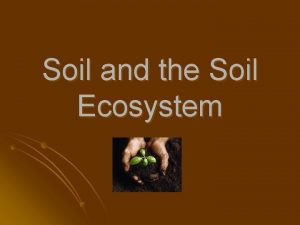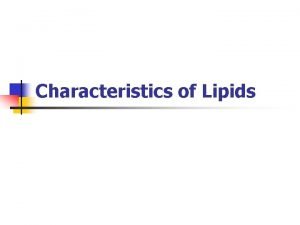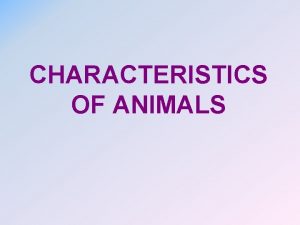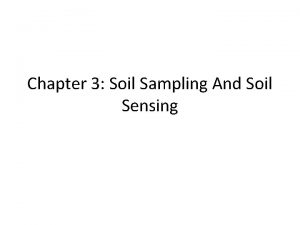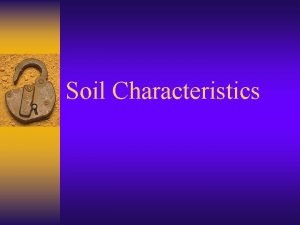CHAPTER 5 2 Soil CHARACTERISTICS OF SOIL Soil












- Slides: 12

CHAPTER 5. 2 Soil

CHARACTERISTICS OF SOIL • Soil is what is made from weathering and covers most land surfaces. • Weathering produces a layer of rock and mineral fragments called regolith. Soil is an important part of regolith. • Soil characteristics are composition, texture, and structure.

SOIL COMPOSITION • Soil is made of 4 things: mineral matter (brokendown rock); organic matter or humus (decayed remains of organisms); water; and air. • Different soils have different amounts of each of these things. • Good quality soil has 45% mineral matter, 25% air spaces, 25% water, and 5% organic matter. • Organic matter is one of the most important parts of soil and it makes the soil very rich.

SOIL TEXTURE • Most soils have different sizes of particles. Soil texture is the proportions of different particle sizes. • Soil is categorized based on the amount of clay, silt, and sand. • For example: sandy clay has 40% clay, 10% silt, and 50% sand. • Texture is important on whether or not a soil can support plant life. Sandy soils dry out too quickly, clay rich soils drain very slowly.

SOIL STRUCTURE • Soil particles usually form clumps that give it a particular structure. Soil structure determines if the soil can be cultivated and how easily it will erode.

SOIL FORMATION • There are several factors that help form soil. A few of the most important factors are parent material, time, climate, organisms, and slope.

PARENT MATERIAL • Where the mineral matter in the soil comes from is called parent material. • The parent material can be bedrock or unconsolidated deposits. • Soil from bedrock is called residual soil. • Soil from unconsolidated deposits are called transported soil.

• Parent material affects soil 2 ways: • Rate of weathering and soil formation – unconsolidated material are subjected more to chemical weathering. Also, these soils develop more quickly. • Parent material can also affect soil’s fertility – how much plant life the soil can support.

TIME • The longer the soil forms the thicker it becomes.

CLIMATE • This has the greatest effect. Different temperatures and precipitation influence rate, depth, and type of weathering.

ORGANISMS • The type and how many organisms have a major impact on soil. • Plants are the main source of organic matter in soil. Microorganisms, like fungi and bacteria are also important for decomposing dead plant and animals. • Earthworms are very important because they create holes by burrowing this helps water and air into the soil. • Bacteria can be very important for plants in soil.

SLOPE • Steep slopes can have accelerated erosion. • Flat areas will have little erosion and poor drainage. • The way the slope faces also makes a difference – in the Northern Hemisphere, south facing slopes receive more sunlight. In the Southern Hemisphere, north-facing slopes get more sunlight.
 Living soil vs dead soil
Living soil vs dead soil Convergent plate boundaries
Convergent plate boundaries Canadian vegetation
Canadian vegetation C horizon characteristics
C horizon characteristics Characteristic of loam soil
Characteristic of loam soil Latosol soil profile diagram
Latosol soil profile diagram Podzol soil profile
Podzol soil profile Soil characteristics
Soil characteristics Characteristics of red soil
Characteristics of red soil Pedalfers
Pedalfers Soil characteristics
Soil characteristics Chapter 7 weathering erosion and soil
Chapter 7 weathering erosion and soil Mechanical and chemical weathering venn diagram
Mechanical and chemical weathering venn diagram



